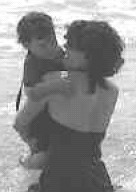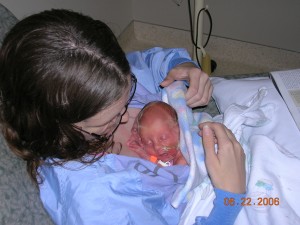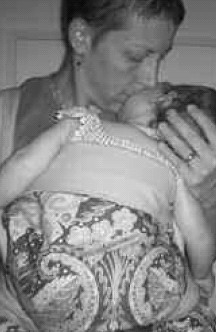From API’s Publications Team
 According to an article on Guadian.co.uk, “Postnatal Depression and Your Baby,” the length of a new mother’s postpartum depression has a strong tie with the difficulties she’ll experience in establishing a close attachment with her baby.
According to an article on Guadian.co.uk, “Postnatal Depression and Your Baby,” the length of a new mother’s postpartum depression has a strong tie with the difficulties she’ll experience in establishing a close attachment with her baby.
Women who recover from their depression by the time their baby is six months old relate better to the baby than women whose depression lasts longer, according to a study published in a 1995 issue of Developmental Psychology, “Depression in First-Time Mothers: Mother-Infant Interaction and Depression Chronicity.” Treatment of postpartum depression is essential for the mother-infant relationship, as well as the infant’s development.
According to “Postpartum Depression Beyond the Early Postpartum Period,” a study published in a 2004 issue of Journal of Obstetric, Gynecologic and Neonatal Nursing, children of mothers with long-time or recurrent depression tend to have behavioral problems, such as crying a lot and being excessively demanding or withdrawn.
Mothers with postpartum depression encourage these infant behaviors through certain behaviors, including:
- Stopping breastfeeding before the baby is ready;
- Not interacting socially with the baby, such as playing and showing books or toys;
- Not following care routines.
 Depression — a mental illness marked by unrelenting sadness and hopelessness that permeates the lives of an estimated one in 18 people — is among the most prevalent medical disorders in today’s world, affecting 12 percent of women, 7 percent of men, and 4 percent of adolescents in a given year. Eight percent of adults will develop depression sometime in their life, and women are most prone — their lifetime risk is 20 percent.
Depression — a mental illness marked by unrelenting sadness and hopelessness that permeates the lives of an estimated one in 18 people — is among the most prevalent medical disorders in today’s world, affecting 12 percent of women, 7 percent of men, and 4 percent of adolescents in a given year. Eight percent of adults will develop depression sometime in their life, and women are most prone — their lifetime risk is 20 percent. A January 6 article in the United Kingdom’s Nursery World magazine, “A Unique Child: Attachment – Practice in Pictures – A Sense of Security,” illustrates the difference between a securely and insecurely attached child.
A January 6 article in the United Kingdom’s Nursery World magazine, “A Unique Child: Attachment – Practice in Pictures – A Sense of Security,” illustrates the difference between a securely and insecurely attached child. According to an article on InTheNews.co.uk, “One in Four Aussie Kids Have Parent with Mental Illness,” mentally ill parents are more likely to form insecure attachments with their children.
According to an article on InTheNews.co.uk, “One in Four Aussie Kids Have Parent with Mental Illness,” mentally ill parents are more likely to form insecure attachments with their children. Welcome to Motherhood!
Welcome to Motherhood! When a parent utters the word tantrum to another parent, the reaction is either a supportive smile or a grimace of dread; I have yet to see or hear another parent respond with glee. And really, who blames her? Until recently, tantrums were considered manipulation by the child to control the parent.
When a parent utters the word tantrum to another parent, the reaction is either a supportive smile or a grimace of dread; I have yet to see or hear another parent respond with glee. And really, who blames her? Until recently, tantrums were considered manipulation by the child to control the parent.

 I remember my father saying to me in 1968, “You know this business about the instinct for a small child to stay close to its mother, and the intimate bond they form? Well, I believe that it’s the same instinct to form close bonds that stays with us all our lives, and we, as adults, suffer the same feelings of loss when a loved one dies, as a child feels who’s lost its mother.”
I remember my father saying to me in 1968, “You know this business about the instinct for a small child to stay close to its mother, and the intimate bond they form? Well, I believe that it’s the same instinct to form close bonds that stays with us all our lives, and we, as adults, suffer the same feelings of loss when a loved one dies, as a child feels who’s lost its mother.”